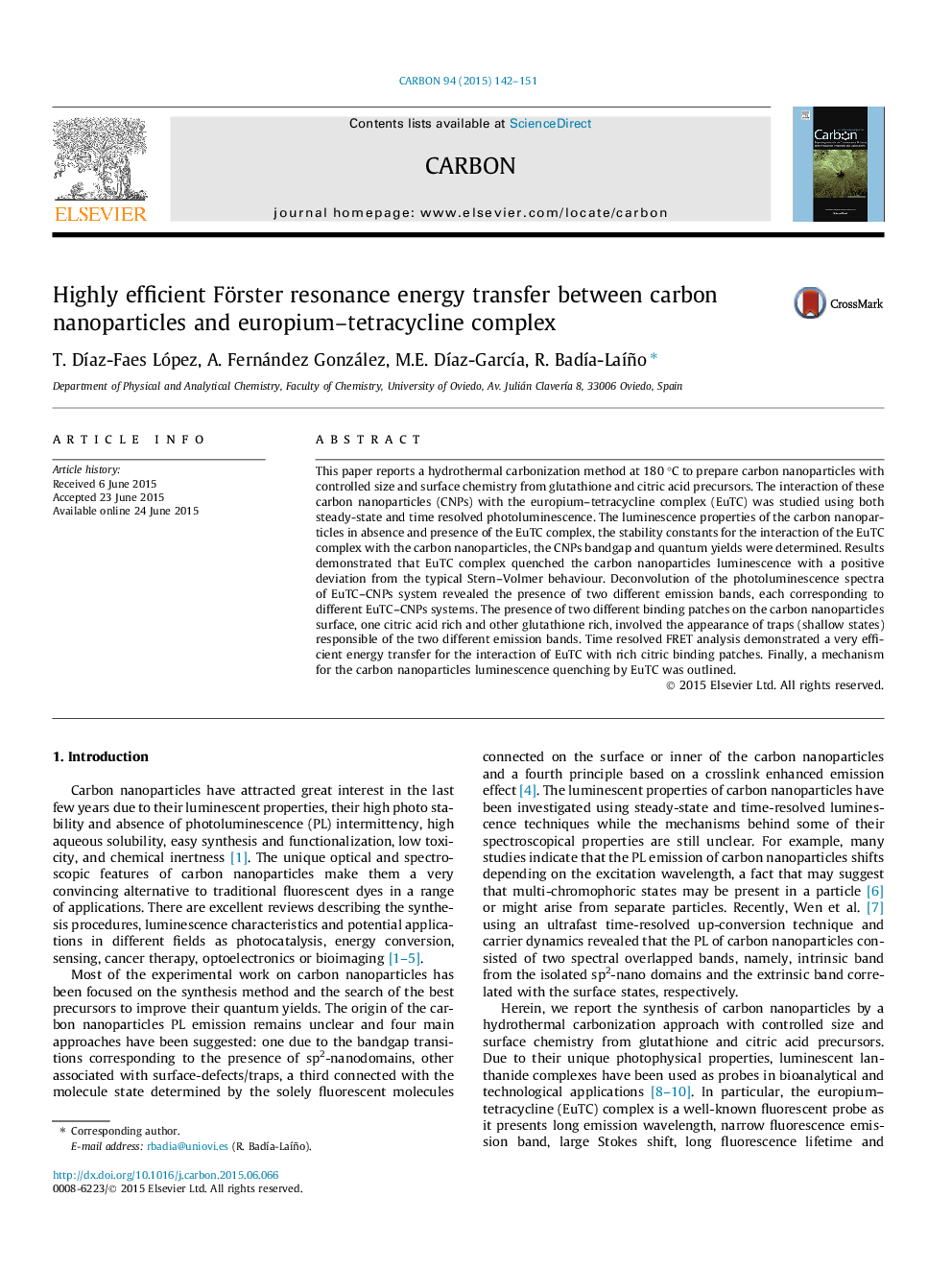| Article ID | Journal | Published Year | Pages | File Type |
|---|---|---|---|---|
| 7851231 | Carbon | 2015 | 10 Pages |
Abstract
This paper reports a hydrothermal carbonization method at 180 °C to prepare carbon nanoparticles with controlled size and surface chemistry from glutathione and citric acid precursors. The interaction of these carbon nanoparticles (CNPs) with the europium-tetracycline complex (EuTC) was studied using both steady-state and time resolved photoluminescence. The luminescence properties of the carbon nanoparticles in absence and presence of the EuTC complex, the stability constants for the interaction of the EuTC complex with the carbon nanoparticles, the CNPs bandgap and quantum yields were determined. Results demonstrated that EuTC complex quenched the carbon nanoparticles luminescence with a positive deviation from the typical Stern-Volmer behaviour. Deconvolution of the photoluminescence spectra of EuTC-CNPs system revealed the presence of two different emission bands, each corresponding to different EuTC-CNPs systems. The presence of two different binding patches on the carbon nanoparticles surface, one citric acid rich and other glutathione rich, involved the appearance of traps (shallow states) responsible of the two different emission bands. Time resolved FRET analysis demonstrated a very efficient energy transfer for the interaction of EuTC with rich citric binding patches. Finally, a mechanism for the carbon nanoparticles luminescence quenching by EuTC was outlined.
Related Topics
Physical Sciences and Engineering
Energy
Energy (General)
Authors
T. DÃaz-Faes López, A. Fernández González, M.E. DÃaz-GarcÃa, R. BadÃa-LaÃño,
